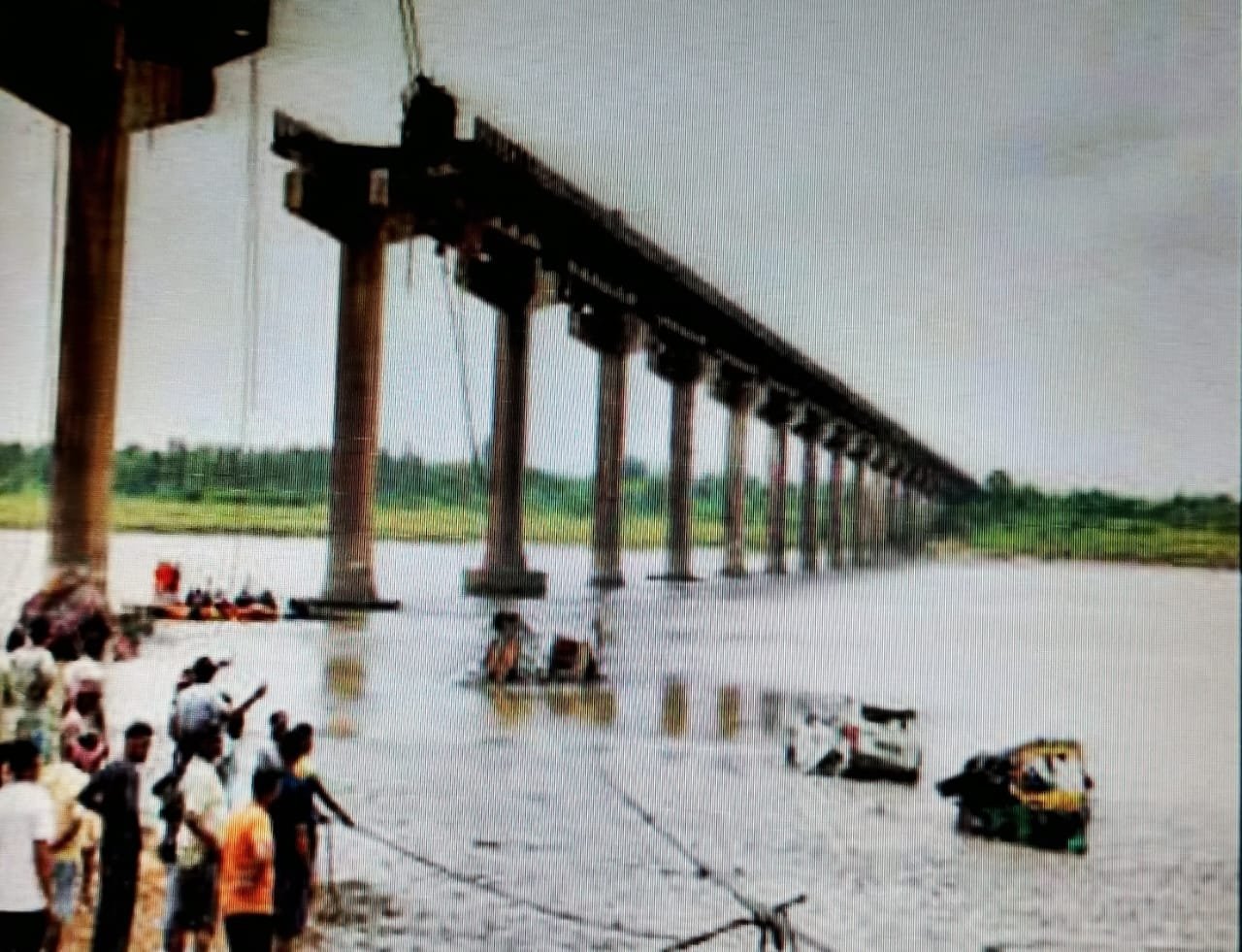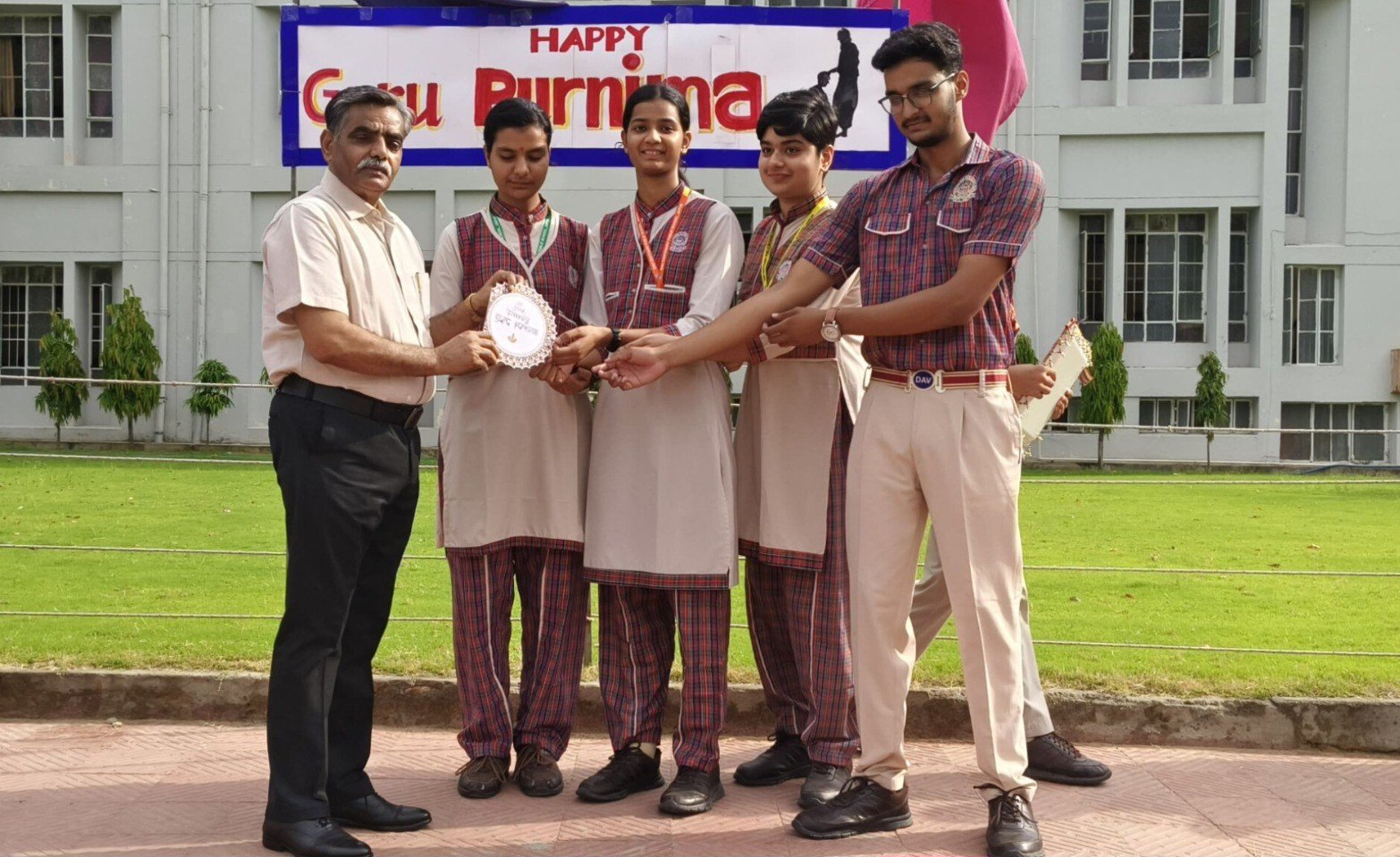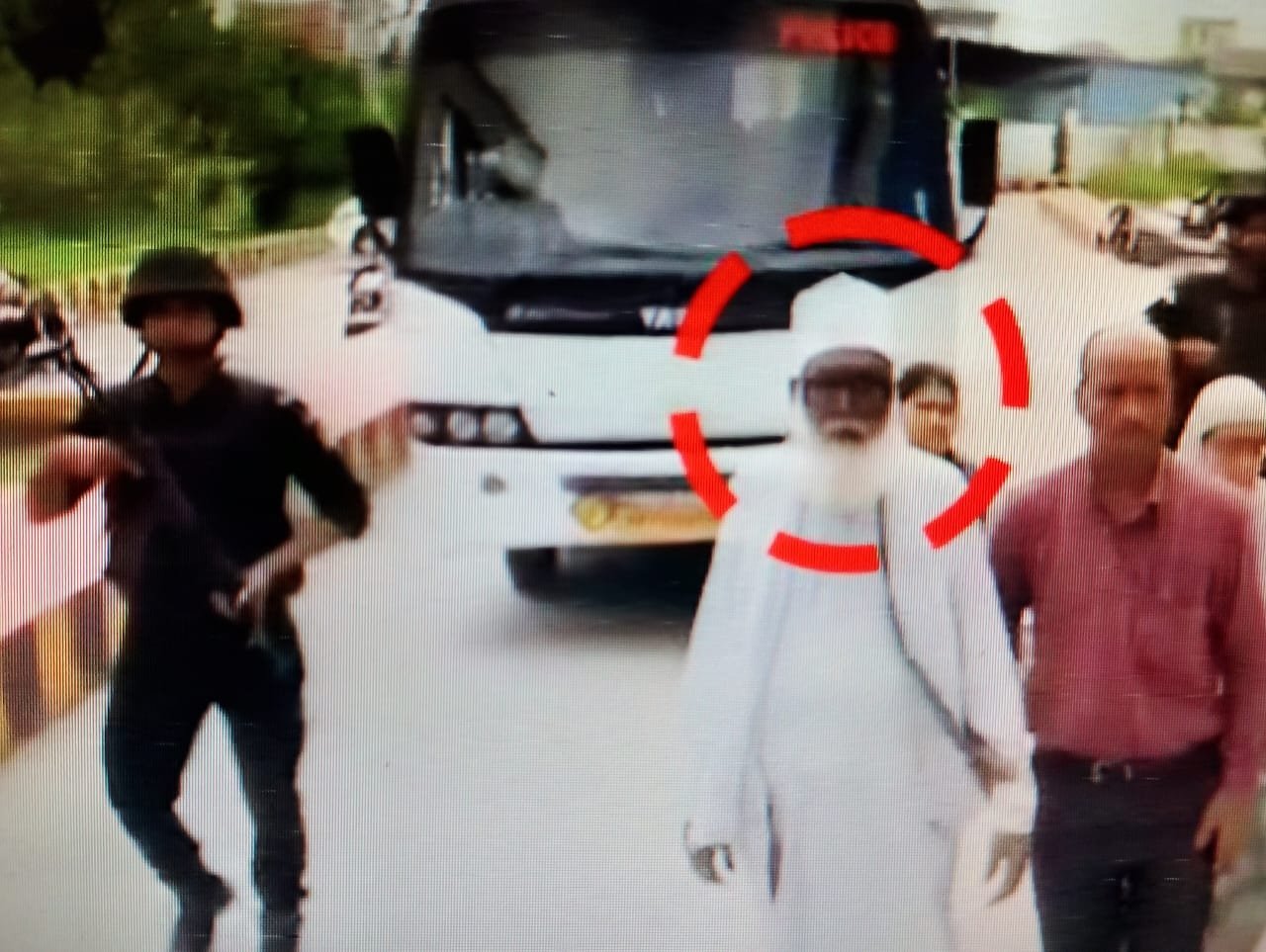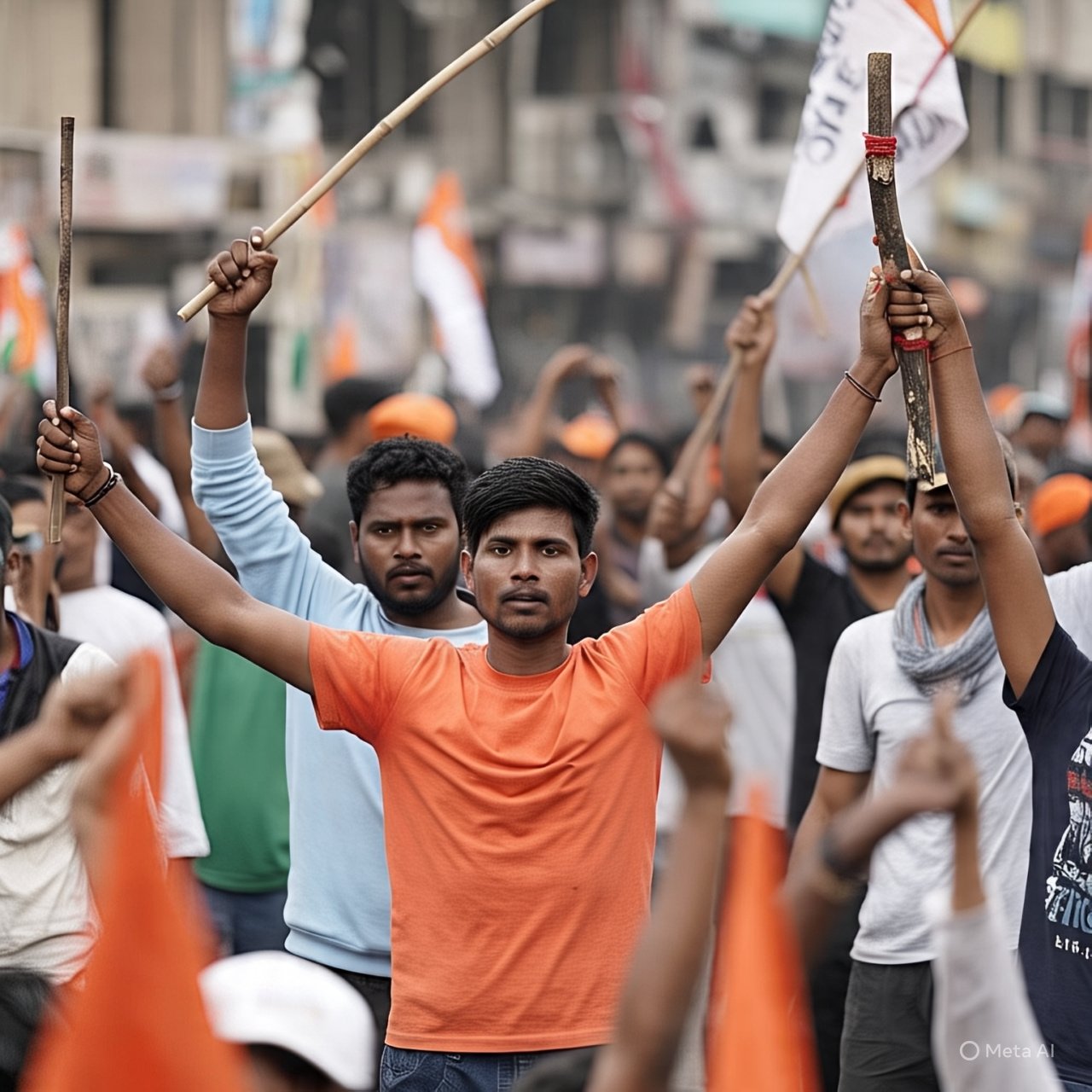India
The Transformation of Prayagraj Mela Grounds Post-Maha Kumbh 2025

Contents
Introduction to Prayagraj Mela Grounds
The Prayagraj Mela Grounds, a historically significant site located in the city of Prayagraj, India, has long been associated with the revered Kumbh Mela, one of the largest religious gatherings in the world. This expansive area serves as the epicenter for millions of devotees and visitors who gather to participate in sacred rituals, seek blessings, and immerse themselves in the spiritual atmosphere that characterizes the Kumbh Mela. The grounds not only exemplify the confluence of faith and culture but also illustrate the rich tapestry of Indian history intertwined with religious practices.
The Kumbh Mela, occurring every twelve years at this site, draws participants from all walks of life, reflecting the diversity and unity of the Indian culture. The Prayagraj Mela Grounds boast significant historical landmarks, including ancient temples and cultural heritage sites, which enhance its spiritual value. As the city of Prayagraj gears up for the Maha Kumbh in 2025, expectations are high for improved infrastructure and facilities that meet the needs of the vast influx of pilgrims. The preparations for this event are comprehensive, involving expansive planning and development to ensure smooth proceedings throughout the festival.
In anticipation of the Maha Kumbh 2025, the local government and various stakeholders have initiated extensive renovations to the Mela Grounds. These upgrades include enhanced sanitation facilities, improved transportation access, and the establishment of additional amenities designed to enhance the overall experience for attendees. With these transformative changes, the Prayagraj Mela Grounds are not only expected to accommodate the spiritual needs of pilgrims but also to embrace modernity while respecting its rich historical essence, making it more accessible and welcoming for everyone involved.
The Aftermath of Maha Kumbh: Overview of Changes
The conclusion of the Maha Kumbh 2025 heralded a significant transformation of the Prayagraj Mela Grounds. As the last of the pilgrims departed, the sprawling expanse, once bustling with devotees and vendors, began to undergo an immediate metamorphosis. Dismantling activities commenced swiftly, with temporary structures that had housed stalls, tents, and makeshift lodgings being taken down. These structures were essential during the festival for accommodating millions of visitors, but post-Kumbh, their removal signifies a return to regular operations and the restoration of the grounds.
Following the dismantling phase, a series of restoration projects were initiated to revive the natural beauty of the Prayagraj Mela Grounds. This included extensive cleaning efforts to remove waste and litter left behind after the massive congregation. Additionally, landscaping efforts were implemented to restore greenery and enhance the overall aesthetics of the area. The local administration recognized the need to maintain the grounds, ensuring they remain an attractive site year-round for both locals and tourists.
In the wake of the Maha Kumbh, the repurposing of the Mela Grounds is noteworthy. Former sites of worship and gathering areas are often transformed into venues for cultural events, fairs, and annual festivals. This new utilization reflects the community’s commitment to maintaining the vibrancy of the site, ensuring it continues to be a focal point for gatherings and cultural exchange. Overall, the aftermath of the Maha Kumbh not only involved dismantling and restoration efforts but also set the stage for a continuing legacy of celebration and engagement in the Prayagraj community.
Environmental Impact: Cleanup and Restoration Efforts
The Maha Kumbh, one of the largest religious gatherings in the world, undoubtedly leaves a significant imprint on the environment surrounding the Prayagraj Mela Grounds. The sheer volume of visitors to this event generates substantial waste, necessitating comprehensive cleanup and restoration measures post-event. Effective waste management strategies are essential to mitigate the repercussions on the local ecosystem, ensuring that the area can return to its natural state.
Following the conclusion of the Maha Kumbh, various cleanup drives are initiated, focusing on the collection and disposal of the vast amounts of waste produced. These initiatives often involve local communities, environmental organizations, and government bodies, aiming to foster a collaborative spirit in restoring the Mela Grounds. Volunteers equipped with tools and disposal bags work diligently to collect litter, including plastics, food waste, and other refuse that has accumulated during the event. Their efforts are pivotal in maintaining ecological balance and fostering awareness about responsible waste disposal.
In addition to cleanup drives, waste management strategies also encompass recycling and composting initiatives. Efforts are made to segregate recyclables from non-recyclables at the source, which not only promotes recycling rates but also reduces the volume of waste sent to landfills. Promoting the composting of organic waste encourages the return of nutrients to the soil, thus aiding the restoration of the natural landscape surrounding the Mela Grounds.
Lastly, the importance of restoring the local ecosystem cannot be overstated. Insights on replanting native flora could contribute to habitat restoration and biodiversity. This holistic approach to cleanup and environmental restoration ensures that the legacy of the Maha Kumbh aligns with sustainable practices, benefiting both the local community and the varied ecosystems that inhabit the area for years to come.
Infrastructure Changes: Reimagining the Venue
The Prayagraj Mela Grounds, renowned for hosting the Maha Kumbh, has undergone significant infrastructural transformations post-Maha Kumbh 2025, aimed at elevating the experience of visitors in subsequent gatherings. The focus on enhancing the venue’s capabilities has led to the construction of new facilities, improved amenities, and the integration of advanced technologies to manage crowd dynamics and ensure safety.
One of the most notable developments is the establishment of modern pavilions that accommodate numerous stalls and kiosks, offering a wide array of local handicrafts and cuisine. These pavilions are designed with spacious layouts and amenities that cater to both vendors and visitors. Moreover, the construction of additional restrooms and sanitation facilities reflects a commitment to hygiene, significantly enhancing the overall comfort of the attendees. The upgrades include eco-friendly initiatives such as waste segregation and the installation of solar-powered lighting to minimize the environmental impact.
In addition to physical infrastructure, the integration of technology plays a pivotal role in transforming the Prayagraj Mela Grounds. Crowd management systems, utilizing surveillance cameras and real-time data analytics, have been implemented to monitor visitor flow efficiently. This will help in mitigating congestion and ensuring a smoother experience for those attending future events. The deployment of mobile applications further facilitates the experience by providing visitors with information about event schedules, locations of various attractions, and safety protocols.
Security has also been prioritized, with enhanced surveillance measures incorporated to ensure the safety of all participants. Collaboration with local law enforcement and emergency services has resulted in a detailed security framework, ready to respond effectively to any potential emergencies. These infrastructural changes reflect a comprehensive approach to reimagining the Prayagraj Mela Grounds, ensuring that they are better equipped to accommodate larger audiences and facilitate memorable experiences in the years to come.
Cultural Significance in the Post-Kumbh Era
The Prayagraj Mela Grounds hold immense cultural significance, particularly following the massive convergence of spirituality and tradition during the Maha Kumbh in 2025. The aftermath of this grand event marks a period of continued cultural vibrancy, where the grounds transform into a hub of ongoing festivities and community gatherings. The cultural legacy established during the Kumbh is not simply confined to its duration but is a stepping stone for a rich tapestry of events throughout the year.
In the months following the Maha Kumbh, the Mela Grounds are adorned with a multitude of programs and activities that pay homage to the traditions upheld during the Kumbh. Festivals celebrating various local cultures, such as folk performances, art exhibitions, and food fairs, are organized to engage both residents and visitors. Such initiatives foster a sense of unity while reinforcing the values and spiritual essence that the Kumbh embodies. Additionally, the grounds frequently host spiritual discourses and pujas, further anchoring its role as a center of religious activities.
The integration of modern artistic expressions, along with traditional forms, enhances the cultural significance of the Prayagraj Mela Grounds. Like-minded individuals and organizations collaborate to organize workshops and cultural events aimed at showcasing local artisans. This not only supports the economic aspects of the community but also ensures that the crafts and skills passed down through generations remain alive and appreciated.
Moreover, educational workshops on the historical importance of the Kumbh and the rich history associated with Prayagraj contribute to the cultural education of visitors. In this way, the transformative experiences of the Maha Kumbh lead to a dynamic and progressive cultural environment that continues to flourish beyond the event itself. The Prayagraj Mela Grounds, therefore, remain a significant beacon of heritage and culture, drawing people from various backgrounds to celebrate the legacy of the Kumbh.
Visitor Experience: Changes and Enhancements
Post-Maha Kumbh 2025, the Prayagraj Mela Grounds have undergone substantial changes aimed at enhancing visitor experience for tourists and pilgrims alike. With the event’s conclusion, efforts have been directed at solidifying the grounds as a year-round destination. The enhancements focus on a variety of factors, including amenities, accessibility improvements, and the introduction of new attractions.
In regards to amenities, the Mela Grounds now feature upgraded restroom facilities, improved seating areas, and expanded food concessions. These facilities have been designed with visitor comfort in mind, ensuring that individuals can enjoy their time at the venue without encountering the limitations experienced during the Kumbh. Cleanliness and maintenance have also been prioritized, leading to a more pleasant and hygienic environment for all attendees.
Accessibility has been significantly improved as well, catering to the needs of diverse audiences. Key enhancements include the installation of ramps and disabled-friendly pathways, making it easier for visitors with mobility challenges to explore the vast grounds. Moreover, well-marked signage has been introduced, guiding guests to various attractions and facilities, which fosters a more intuitive navigation experience.
In addition to these improvements, the Prayagraj Mela Grounds have welcomed several new attractions aimed at enriching the overall visitor experience. Cultural exhibits showcasing local art and heritage offer an insightful glimpse into the region’s traditions, while interactive installations and entertainment areas engage younger audiences. These attractions not only create a lively atmosphere but also serve to educate visitors about the rich history of Prayagraj and its cultural significance.
In conclusion, the transformations at Prayagraj Mela Grounds reflect a commitment to enhancing visitor experience through upgraded amenities, improved accessibility, and exciting new attractions, making it a prime destination for tourism throughout the year. This evolution from a temporary gathering space to a vibrant cultural hub showcases the potential of the site to attract visitors year-round, enriching their experience immensely.
Local Economy: Impact on the Surrounding Community
The Maha Kumbh, as one of the largest religious gatherings in the world, has a substantial impact on the local economy of Prayagraj and its surrounding areas. Following the event in 2025, the economic benefits extend well beyond the duration of the Kumbh, affecting various sectors and stakeholders in the region. The influx of millions of visitors creates a unique opportunity for local businesses, stimulating demand for goods and services. This heightened activity not only provides a temporary boost but also lays the groundwork for long-term economic growth.
One significant aspect of this transformation is the support it offers to small enterprises, which include local artisans and craftspeople who showcase traditional skills. The demand for handmade products, such as textiles, pottery, and religious artifacts, dramatically increases during the event. Visitors are often keen to purchase authentic souvenirs, bolstering the incomes of local crafters. The evolution of these artisanal crafts into a sustainable economic model ensures that the community benefits post-Maha Kumbh.
Moreover, food vendors experience a surge in business during the Kumbh, with diverse culinary offerings attracting both tourists and locals. The popularity of street food not only enhances the visitor experience but also provides local cooks and chefs with the opportunity to showcase their culinary skills. Post-event, many food vendors and restaurants gain recognition, leading to continued patronage that sustains their operations.
Additionally, the growth of venues and temporary structures during the Kumbh fosters a rise in the hospitality sector, which includes hotels, homestays, and guesthouses. As these establishments continue to thrive, they contribute to job creation and increased economic resilience for the local workforce. The synergy among these various sectors solidifies the economic impact of the Maha Kumbh on the Prayagraj community, ensuring a ripple effect that carries on long after the last pilgrim departs.
Long-term Vision for Prayagraj Mela Grounds
The Prayagraj Mela Grounds have been a significant cultural and spiritual hub, especially in the context of the Kumbh Mela. Following the Maha Kumbh 2025, the long-term vision for the Prayagraj Mela Grounds aims to integrate sustainable development, enhance community engagement, and optimize the facilities for future events. One of the primary objectives is to ensure that the grounds serve as a multifunctional space catering to various cultural, sports, and entertainment activities outside the Kumbh period.
Sustainable development is at the heart of this vision. The stakeholders aim to implement green technologies, such as solar energy systems and rainwater harvesting techniques, to ensure minimal environmental impact. In addition, the construction and renovation of facilities will prioritize the use of eco-friendly materials. This commitment to sustainability not only reduces the ecological footprint of events held at the grounds but also sets a precedent for other venues across the country. The incorporation of natural landscapes within the grounds will also enhance the aesthetic and spiritual experience for visitors.
Future event hosting strategies will involve a careful evaluation of community interests and needs. Engaging the local community is vital in shaping the programming and facilities offered at the Prayagraj Mela Grounds. Regular feedback sessions will be conducted to gather inputs from residents, local businesses, and cultural organizations, ensuring that the grounds accommodate diverse activities that resonate with the community. This collaborative approach aims to create a sense of ownership among locals, fostering pride in the Mela Grounds as a shared space for collective identity.
Ultimately, the long-term vision for the Prayagraj Mela Grounds strives to balance heritage preservation with modern advancements, ensuring that this iconic venue continues to thrive for generations to come.
Also read :Unraveling the Controversy: IIT Baba’s Claims of Attack During Maha Kumbh News Debate
Summary: The Future of Prayagraj Mela Grounds
The Prayagraj Mela Grounds, following the Maha Kumbh 2025, represents a significant transformation in both its physical landscape and its cultural relevance. This iconic venue, known for hosting one of the largest religious gatherings in the world, is poised to become a multifaceted space catering to a variety of events beyond its traditional spiritual roots. With advancements in infrastructure and the inclusion of modern amenities, the grounds are now equipped to handle not only religious festivals but also cultural fairs, educational exhibitions, and civic engagements, thereby broadening their appeal.
The enhancements made to the Prayagraj Mela Grounds underscore a commitment to preserving the essence of its historical significance while adapting to contemporary needs. Improved access and amenities are likely to attract larger audiences for diverse events, fostering a sense of community and cultural exchange. As a result, this venue may evolve into a hub for artistic expression and interaction, allowing for a greater engagement between locals and visitors seeking to connect with the rich heritage of Prayagraj.
Looking forward, the management of the grounds must focus on maintaining a balance between preserving traditional practices and embracing innovation. By leveraging technology and sustainable practices, the Prayagraj Mela Grounds can continue to thrive as a central space for spiritual gatherings while also serving as a platform for modern cultural initiatives. The potential for this site to accommodate a wider range of activities signals a promising future, one that honors its past yet embraces the dynamism of the present and future. In conclusion, the transformation of the Prayagraj Mela Grounds heralds an exciting chapter in its history, poised to enrich the spiritual and cultural tapestry of the region for generations to come.
Accident
Vadodara Bridge Tragedy: Death Toll Rises to 19, Two Still Missing – Rescue Operations Continue in Mahisagar River

Contents
Vadodara (Gujarat), July 11, 2025
A heart-wrenching incident has shaken Gujarat as the Gambhira–Mujpur bridge over the Mahisagar River in Vadodara district collapsed unexpectedly. So far, 19 people have lost their lives, while 2 individuals remain missing. Rescue teams have been relentlessly working for the third consecutive day in the hope of saving lives and retrieving the missing.
How Did the Tragedy Happen?
The incident occurred on the morning of July 9, when several vehicles were crossing the bridge. Suddenly, a major section of the bridge collapsed into the river, dragging with it two trucks, an SUV, a pickup van, an auto-rickshaw, and two motorcycles. The bridge was nearly 40 years old, and multiple complaints had been made about its deteriorating condition.
Victims Identified, Families Devastated
So far, 18 bodies have been recovered from the debris, while one critically injured person succumbed to injuries at the hospital, taking the total death toll to 19. Among the victims were women, children, and entire families who were out on a pilgrimage for Guru Purnima.
Search Operations Still Underway
Rescue efforts by NDRF, SDRF, and fire brigade teams are still ongoing. The operation is facing major challenges due to the river’s depth, strong current, and over 10 feet of thick mud, making it difficult to access submerged vehicles. Cranes, boats, and divers are being deployed to find the two missing persons.
Government Response and Action
In the wake of the incident, the state government swiftly suspended four engineers and has ordered a detailed investigation into the bridge collapse. The government has also announced financial compensation of ₹2 lakh to the families of the deceased and ₹50,000 for the injured.
Public Outrage and Unanswered Questions
Local residents claim the bridge was already in a dangerous condition, but authorities failed to take timely action. Media reports reveal that just days before the tragedy, a journalist had posted a video highlighting the poor state of the bridge, which went ignored.
This incident has once again exposed the negligence and oversight in maintaining public infrastructure. Behind every number is a grieving family – a shattered home, a mother who lost her child, a father never to return. The need of the hour is strict accountability, immediate structural audits, and long-term corrective measures — so that such a tragedy never repeats itself.
Education
Guru Purnima Celebration at DAV CPS, Jaipur – A Heartfelt Tribute to Guiding Lights

Jaipur | July 10, 2025
In an atmosphere filled with devotion, gratitude, and inspiration, DAV Centenary Public School, Vaishali Nagar, Jaipur celebrated Guru Purnima with heartfelt enthusiasm on Thursday, July 10. The event turned out to be more than just a celebration—it was a beautiful expression of love and respect for the teachers who illuminate the path of learning for their students.
The morning assembly set the tone for the day with the soothing sounds of shlokas dedicated to gurus, creating a spiritually charged environment across the campus. The essence of the celebration was beautifully captured in a speech that explained the cultural and historical roots of Guru Purnima, reminding everyone of the powerful legacy of the guru-shishya tradition.
Students poured their hearts out through soulful poems, melodious songs, and inspiring speeches, each echoing a shared sentiment—deep respect for their mentors. A mesmerizing classical dance performance, portraying devotion and reverence towards gurus, stole the spotlight and left the audience spellbound.
One of the most touching moments of the day was when the students presented a handmade gratitude card to Principal Mr. A.K. Sharma, who has been a constant source of wisdom and encouragement. In his address, Mr. Sharma reflected on the irreplaceable role of teachers in shaping young minds and urged students to stay rooted in values, discipline, and lifelong learning.
“The presence of a guru in one’s life is a blessing,” he said. “True success comes not just from knowledge, but from the humility to keep learning.”
The event concluded on a thoughtful note, leaving everyone—teachers, students, and staff—feeling more connected, more thankful, and more inspired. Guru Purnima at DAV CPS was not just an event, but an experience that reminded all of the timeless role of a teacher—not just in the classroom, but in life.
Crime
Indian Nurse to Be Hanged in 6 Days in Yemen — The Heartbreaking Story of Nimisha Priya, Who Gave Her Partner a Sedative That Turned Deadly

Contents
Thiruvananthapuram / Yemen | July11, 2025
Once a hopeful young nurse from Kerala, Nimisha Priya is now counting her final days in a Yemeni prison. Her crime — administering a sedative that led to the death of her Yemeni business partner, Alkhader Al-Omari. Her punishment — execution by hanging on July 13, 2025.
But behind this grim sentence lies a story much more complicated — one filled with ambition, control, fear, and a moment that changed everything.
A Nurse with Dreams, and a New Life Abroad
Nimisha Priya wasn’t a criminal when she left India. She was a caregiver — a skilled nurse with dreams of building a better life. In Yemen, she found work, opened a clinic, and partnered with Alkhader Al-Omari, a local man who helped her navigate the foreign land.
But what started as a partnership slowly turned into a prison.
Trapped in a Toxic Relationship
Reports from the time suggest that Al-Omari soon took control of more than just the clinic. He allegedly confiscated Nimisha’s passport, isolated her, and began mentally and physically abusing her. He took over her earnings and threatened her when she talked about returning home to India.
Far from family, friends, or legal protection, Nimisha felt completely trapped — her life and freedom in the hands of a man who, she believed, would never let her go.
The Night It All Changed
Then came that fateful night in 2017.
According to court documents, Nimisha gave Al-Omari a high dose of a sedative. Her stated intention was not to kill him, but to make him unconscious, retrieve her passport, and escape. But the sedative proved too strong — Al-Omari died.
Panic set in. Nimisha reportedly dismembered his body and tried to hide the evidence in a water tank. A gruesome and desperate act that, once discovered, left her no room to explain.
A Death Sentence, and a Race Against Time
The Yemeni court ruled the act pre-meditated murder and sentenced Nimisha to death by hanging.
For years, legal teams in India and Yemen pleaded for clemency. Activists pointed to the abuse she suffered, to the desperation of a woman with no escape, and to her otherwise clean record. Her mother, in tears, begged the Yemeni family for forgiveness, hoping for a “Diya” — blood money — a custom in Yemen that allows the victim’s family to pardon the accused.
But that pardon never came.
Only Six Days Left…
Today, Nimisha Priya is a prisoner not just behind bars, but in time. With just six days left, she awaits her execution. Her mother is still trying — hoping against hope — for one final miracle.
Meanwhile, millions in India are asking:
Was she a murderer? Or a victim of circumstance, trying to survive in a world where no one came to help?
Beyond the Verdict
This is not just Nimisha’s story. It’s the story of thousands of Indian women who work abroad, often with little protection. It’s the story of how desperation can drive someone to the edge, and how the law — especially in foreign lands — rarely leaves room for the grey in between.
Crime
India’s Biggest Scam You Never Heard Enough About — ₹49,000 Crore Vanished, 5 Crore Lives Shattered, And Now… One Big Arrest

Contents
Lucknow | July 11, 2025
In what could be one of the biggest financial frauds in India’s history, the curtain has finally started to lift. The Uttar Pradesh Economic Offences Wing (EOW) has arrested Gurnam Singh (69) — the key director behind Pearls Agrotech Corporation Ltd (PACL) — from Punjab’s Ropar district.
His crime? Allegedly orchestrating a ₹49,000 crore Ponzi scheme that duped nearly 5 crore investors across India.
This wasn’t just about money. It was about dreams sold and lives broken — mostly belonging to farmers, small shopkeepers, daily wage workers, and middle-class families who trusted PACL with their hard-earned savings.
The Dream That Turned Into a Trap
PACL promised affordable land investments. The plan sounded simple — invest now, and in a few years, you’d either get a valuable land parcel or high returns.
But behind the glittering promises lay a hollow scam.
No land. No returns. Just a web of false paperwork and delayed answers — until one day, even those stopped.
EOW’s New Face — Tough, Accountable, and On a Mission
What’s changed now? The UP EOW has introduced a “Reward and Punish” system to fast-track major financial crime probes like this:
- Monthly performance tracking of officers
- Fast-track teams deployed in every district
- Seizure of properties under Section 111 of the new BNS law
- Helplines, awareness drives, and social media alerts for public support
This new system has already led to 14 arrests, including key names linked to the ₹250 crore V-Care scam and this massive PACL fraud.
This Isn’t Just About Money — It’s About Betrayal
One woman investor said it best:
“We saved for our children’s education, for their future. Now we run around courts and collector offices, with nothing to show for it.”
Behind every number in this scam — there’s a family. A broken promise. A shattered future.
The Bigger Picture
This arrest proves one thing: Justice may be slow, but it’s not blind. ₹49,000 crore didn’t just disappear — it was siphoned off through trust and illusion. The real question now is:
Will India’s legal system bring back justice and money for 5 crore defrauded citizens? Or will this case too fade into the dust of files and forgotten hearings?
India
India Crosses 1.46 Billion — But Why Are People Having Fewer Children? UN Report Reveals the Changing Math of Population

Contents
New Delhi | July11, 2025
There was a time when India’s growing population was considered the country’s biggest problem. Slogans like “Hum Do, Hamare Do” (We Two, Our Two) echoed across walls and radio channels. But times have changed — and so has the narrative.
According to the latest report by the United Nations, India’s population has officially crossed 1.46 billion, making it the most populous nation on the planet. But what’s surprising is this: India’s fertility rate — the number of children a woman has — is steadily declining.
Today, the average Indian woman is giving birth to just two children, which is right around the replacement level needed to maintain a stable population.
So, if fewer children are being born, why is the population still rising? What’s really happening behind these numbers?
This Isn’t Just About Statistics — It’s a Social Shift
There was a time when India was labelled a “population bomb.” Now, several Indian states — including Kerala, Delhi, Tamil Nadu, Karnataka, and Punjab — have fertility rates below replacement level.
This isn’t happening due to force or law — but through education, awareness, and personal choice. It’s a quiet revolution led by society itself.
India is now slowly moving towards population stability, something once thought to be decades away.
Women Are Leading This Change
Behind these shifting numbers is a bigger story — the story of India’s changing women:
- They’re more educated
- They’re joining the workforce
- They’re marrying later
- And they’re making thoughtful, conscious decisions about motherhood
Children are no longer just a tradition — they’re a planned responsibility.
India’s Population Will Peak by 2060 — Then Begin to Decline
Experts say this population growth is the result of demographic momentum — a situation where the current large number of young people continues to reproduce, even as fertility falls.
But once this momentum slows, India’s population will gradually start to decline — marking the beginning of a new era.
That means: the country that is the youngest today may one day become one of the oldest nations in terms of age demographics.
The Real Question Now: What Will We Do With So Many People?
- Can we create enough jobs for all?
- Will our education and healthcare systems be able to handle the pressure?
- And when the population begins to shrink, who will take care of the elderly?
India now needs smart policies, not just to control numbers — but to improve the quality of its population. Because in the long run, it’s not just about how many people we have, but what those people can do.
The Population Game Has Changed
This UN report isn’t just another document filled with stats — it’s a signal that India is entering a new demographic era.
The country is slowly shifting its focus from “how many” to “how capable” — and that’s where real progress begins.
Crime
Shocking Crime in Gurugram: Rising Tennis Star Radhika Yadav Shot Dead — Father Pulls the Trigger Over Career Dispute

Contents
Gurugram | July 11, 2025
In a deeply disturbing incident that has sent shockwaves across Gurugram, 21-year-old national tennis player Radhika Yadav was shot dead in her own home on Sunday morning. The most heartbreaking detail? The shooter was none other than her own father.
Radhika, who had made a mark at the national level in the past two years and had recently been selected for an international tournament, was the pride of her neighborhood. But her promising journey was cut short not by a stranger, but by someone who was supposed to protect her — her father, Ravindra Yadav.
What led to the tragic shooting?
According to initial police reports, Ravindra Yadav confessed during interrogation that he shot Radhika “in a fit of rage.” Investigators reveal that Radhika was passionate about her tennis career and was preparing to travel abroad for further training and competitions — a plan that reportedly didn’t sit well with her father.
Sources close to the family say Ravindra had always been a strict and conservative man. He was uncomfortable with Radhika’s growing independence and career choices. Tensions had been simmering within the household for months. On Saturday night, a heated argument broke out, and by morning, the unthinkable had happened.
Community in shock
The neighborhood is still reeling from the tragedy. Neighbors describe Radhika as a humble, focused, and highly disciplined young woman.
“She would be out for practice every morning by 5 AM. That kind of dedication is rare these days,” said one neighbor, struggling to hold back tears.
Father arrested on the spot
Police arrested Ravindra Yadav at the scene. He has been charged with murder under relevant sections of the IPC. Radhika’s mother, who was reportedly present in the house during the incident, is in deep shock and under medical observation.
A nation reflects: Are dreams still a crime for daughters?
Radhika’s brutal murder has sparked widespread outrage and grief. It has reignited an uncomfortable question — are daughters still being punished for dreaming big?
When a father turns into the very obstacle his daughter must overcome, it’s a mirror held up to our society.
Latest News
Swiss Accounts, Conversion Racket, and Trapped Innocents — This Wasn’t a Saint, He Was a Predator

Contents
Uttar Pradesh | 11 July 2025
By Credent TV News Desk
He walked with a staff, wore a long beard, and people in the village folded their hands in reverence at his feet. But behind that saintly image was a man running one of the darkest religious conversion syndicates India has ever seen. His name: Changur Baba. Real name: Jalaluddin. Age: 70. And his list of crimes? Long enough to outlive his age.
A Full-Fledged Conversion Industry
Recent investigations by Uttar Pradesh STF and ATS have uncovered a deeply disturbing reality. This so-called baba wasn’t just chanting prayers — he was masterminding an elaborate system of trapping women and girls into forced religious conversions.
His targets? Minor girls, widows, and poor women — the most vulnerable in society.
His method? Manipulation, emotional blackmail, fake promises of marriage, and when that didn’t work — threats and money.
What’s even more shocking — Baba had a conversion training manual. A complete system of how to trap girls from different religions: what to say, when to act affectionate, and when to threaten.
Fixed rates were decided for each conversion. This wasn’t faith — it was business.
Crores in Swiss Bank Accounts
If you thought this racket was operating on a small scale, think again. Investigators discovered over 40 bank accounts linked to Changur Baba, including several in Switzerland. The total transactions? A staggering ₹106 crore (over $12 million).
Where did the money come from? Sharjah, Dubai, and other Islamic countries, according to the STF.
This was not just a religious racket — it was internationally funded and systematically operated.
Arrested — But the Net Is Wider
On 5th July, STF arrested Changur Baba along with his close aide, Neetu alias Nasreen, from a hotel in Lucknow. During interrogation, it was revealed that the network stretched far — from Mumbai to Dubai.
Now, the Enforcement Directorate (ED) has joined the investigation. A money laundering probe is underway, and authorities are preparing to seize assets and properties linked to the illegal trust and conversions.
A Saint No More
Changur Baba may be behind bars now, but the emotional scars he left on thousands of innocent women can’t be counted in case files or spreadsheets.
He exploited faith to deceive, used trust to destroy, and wore religion as a mask for crime.
As one STF officer said:
“He wasn’t a saint in White. He was a predator in disguise.”
The villagers who once bowed before him now raise questions. How did this go on for so long? And how many more like him are out there?
There’s an old saying:
“When fake saints rise, truth becomes the biggest casualty.”
But this time, the law has spoken. And Baba’s mask has finally fallen.
Bihar
Lalu Yadav Faces Major Setback: HC Accepts CBI’s Plea to Increase Sentence in Fodder Scam Case

Contents
By Credent TV News Desk
Patna | July 9, 2025
In a major blow to RJD chief and former Bihar Chief Minister Lalu Prasad Yadav, the High Court has accepted the Central Bureau of Investigation’s (CBI) plea to enhance his sentence in the infamous fodder scam case. This ruling could extend Lalu’s prison term significantly.
What’s the case all about?
The fodder scam, which shook the country in the 1990s, involved large-scale embezzlement of government funds in the name of procuring fodder for livestock in Bihar. Crores of rupees were siphoned off using fake bills and fictitious expenses. Lalu Yadav has already been convicted in multiple related cases and has served time in jail. However, this latest development revolves around increasing the length of his sentence.
What did the CBI argue?
The CBI had approached the High Court stating that the lower court had awarded Lalu a lenient sentence considering the seriousness of the crime. According to the agency, a harsher punishment would be more appropriate given the scale of corruption and betrayal of public trust. Agreeing with this argument, the High Court has now permitted an increase in Lalu Yadav’s sentence.
How did Lalu Yadav and his party react?
The RJD camp has gone into damage control mode. Senior leaders have called this move a “political conspiracy” and declared their intent to challenge the verdict in the Supreme Court. While Lalu Yadav himself has not issued a public statement, sources close to him reveal that he is deeply disappointed and disturbed by the judgment.
What’s next?
This ruling could reshape the political landscape for RJD. The spotlight is now on Tejashwi Yadav—will he now fully take over the party’s reins? Meanwhile, rival parties like BJP and JD(U) have hailed the verdict as a strong stance against corruption and a win for accountability.
Expert Take:
The High Court’s decision is being seen as a symbolic moment in the fight against high-level corruption. For a veteran leader like Lalu Yadav to face an extended sentence sends a powerful message: no matter how old the case, justice does not forget.
India
Indian Air Force Jaguar Fighter Jet Crashes in Rajasthan’s Churu: Pilot and Co-Pilot Killed, Wreckage Scattered Across Village

A heart-wrenching tragedy unfolded on Tuesday morning in Rajasthan’s Churu district, where an Indian Air Force Jaguar fighter jet crashed during a routine sortie, claiming the lives of both the pilot and co-pilot. The crash was so severe that the aircraft broke into pieces, scattering debris over a large area and leaving behind the mutilated remains of the officers across different parts of the village.
The incident took place in a quiet rural area of Churu, where the calm of the morning was shattered by a loud explosion. Villagers rushed out of their homes to find smoke billowing from the wreckage scattered across their fields and streets. The blast was followed by chaos as flames engulfed parts of the crash site, and panic gripped the locals.
According to eyewitnesses, the jet appeared to be flying unusually low and suddenly caught fire mid-air. Moments later, it crashed into the ground and exploded with a thunderous blast, sending plumes of smoke and a pungent smell of burning metal into the air. The debris rained down on homes, roads, and farmlands, turning the entire area into a scene of devastation.
Upon receiving the alert, teams from the Indian Air Force and local police rushed to the spot and began rescue and recovery operations. The crash site has since been sealed off, and efforts are underway to collect and examine the wreckage.
Preliminary reports suggest that the Jaguar was on a routine training mission when it encountered a technical malfunction that led to the crash. The Indian Air Force has launched an official investigation to determine the exact cause.
This incident is not just a tragic loss for the Indian Air Force but a moment of deep sorrow for the entire nation. Tributes have been pouring in for the brave officers who lost their lives in the line of duty. Meanwhile, the village where the crash occurred remains gripped by fear and shock.
Credent TV pays heartfelt homage to the fallen heroes of the sky.
India
Bharat Bandh Today: Why Are 250 Million Workers on Strike? What’s Open, What’s Shut – Here’s Everything You Need to Know

Contents
New Delhi | July 9, 2025
India woke up to a storm of slogans and silent streets today. With banners in hand and voices raised in unison, over 250 million workers and employees have joined a massive nationwide strike – the Bharat Bandh – protesting what they call anti-worker, anti-farmer, and pro-corporate policies of the central government.
This isn’t a symbolic protest. It’s being led by a powerful front of 10 central trade unions, supported by farmer organizations and rural labor unions. Together, they are sending one clear message – “Our voices matter.”
Why This Strike?
The protesting unions have raised serious allegations against the government:
- They say labor rights are being compromised.
- They accuse the government of aggressive privatization.
- They argue corporate interests are being prioritized over the common worker.
- They’re demanding protection of jobs, pensions, and public sector institutions.
Simply put, this bandh is not just about wages – it’s about respect, dignity, and survival.
Services Hit by the Strike
Several essential services across the country have felt the impact. Banking operations have slowed down due to staff participation in the strike. Postal services in many regions are suspended. In some states, public transport has been disrupted, leading to traffic snarls. Industries like coal, steel, and construction are reporting work stoppages. Even the power sector may experience temporary outages due to absentee staff.
What Remains Open?
Despite the unrest, hospitals and emergency services continue to function normally. Most schools, colleges, and private offices are open. Railways are largely operational, though some delays have been reported due to protests in certain regions. Markets and shops are also open in most cities, as trade unions and retail bodies have not actively joined the bandh.
Where the Impact Is Strongest
States like Kerala, West Bengal, Tamil Nadu, and Jharkhand have seen major protests, rallies, and transport blockades. In Gujarat, Maharashtra, and Punjab, the effect is more limited but still visible in sectors like banking and heavy industry.
Voices from the Ground
“We are not asking for favors. We are demanding what is rightfully ours – fair wages, job security, and dignity,” said a worker protesting in Ranchi.
“This bandh is a message to the government – listen before it’s too late,” said a union leader from Kolkata.
What Should You Do Today?
If you need to visit a government office, bank, or post office – call ahead to confirm. If you’re commuting, keep track of traffic and avoid areas with active protests. Stock up on essentials if you’re in a region where services are being disrupted.
The Bottom Line
Bharat Bandh 2025 is more than a strike – it’s a reminder that the people who build this nation also have the power to stop it when ignored. The coming days will reveal whether this united voice of workers leads to policy change, but for today, one thing is certain – the streets have spoken.

 Education1 month ago
Education1 month agoKota ICICI Bank Staffer Swindles ₹4.5 Crore, Gambles It All on Stock Market

 Education2 weeks ago
Education2 weeks ago11 Powerful Reasons Why DAV International Yoga Day Jaipur Uplifted Spirits!

 Bollywood1 month ago
Bollywood1 month agoHousefull 5 Movie Review: Akshay Kumar, Riteish Deshmukh Bring Laughter and Twists in Bollywood’s Biggest Comedy Franchise

 Cricket1 month ago
Cricket1 month agoBengaluru Chinnaswamy Stadium Stampede: 11 Dead, 33 Injured in RCB Victory Parade Chaos

 Education2 weeks ago
Education2 weeks ago7 Inspiring Highlights of DAV Foundation Day Jaipur Celebration – Amazing Vedic Legacy Revealed!

 Education2 weeks ago
Education2 weeks agoEmpowering Educators: A Three-Day Learning Journey at DAV Centenary Public School, Jaipur

 Credent TV2 weeks ago
Credent TV2 weeks agoVIBGYOR Summer Camp Ends on a High at DAV Centenary Public School, Jaipur

 Election3 days ago
Election3 days agoDAV Centenary Public School, Vaishali Nagar, Jaipur Event Report: Talent Hunt Show






































